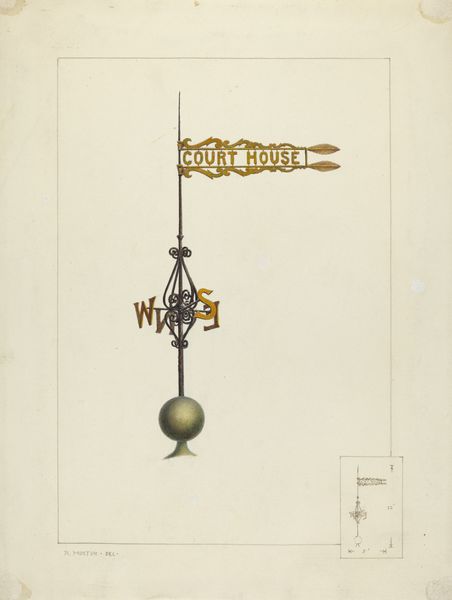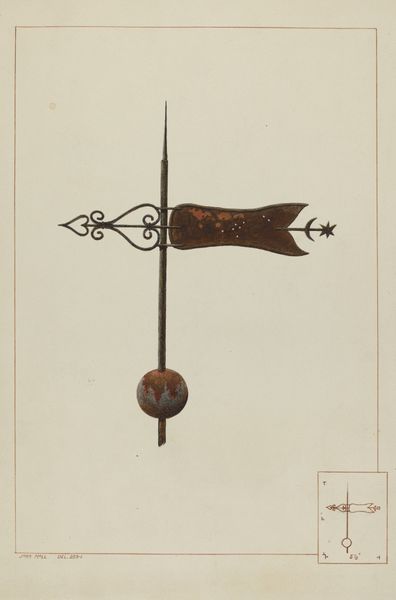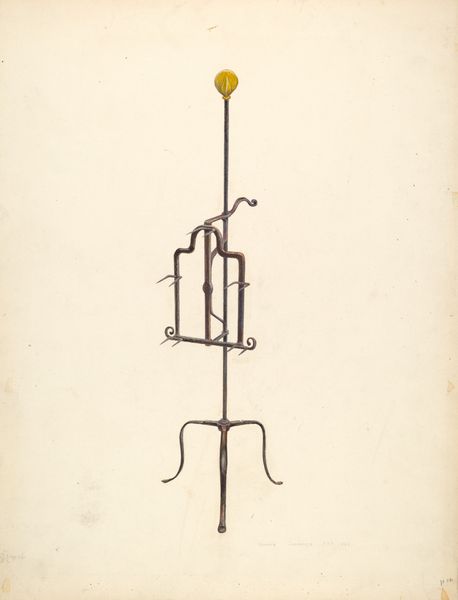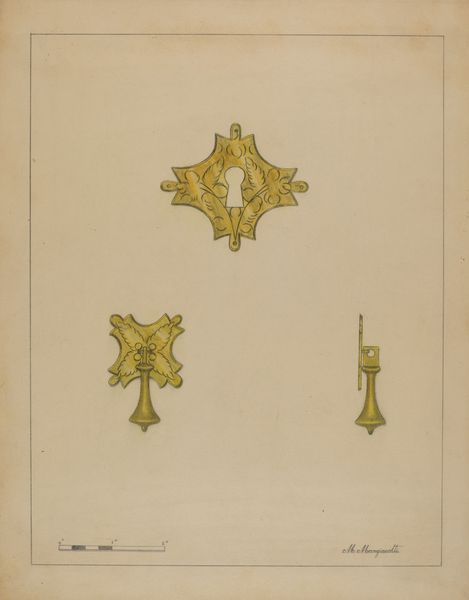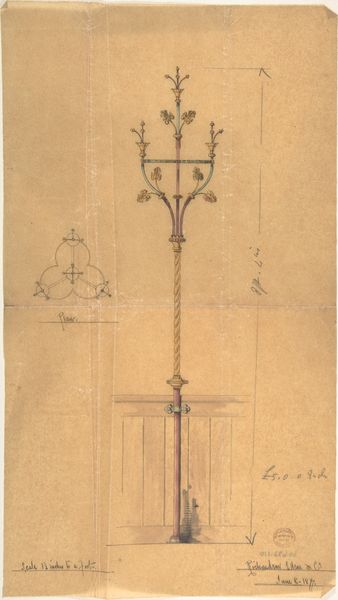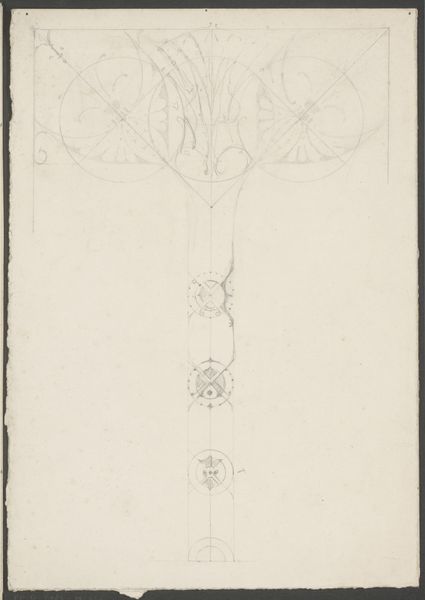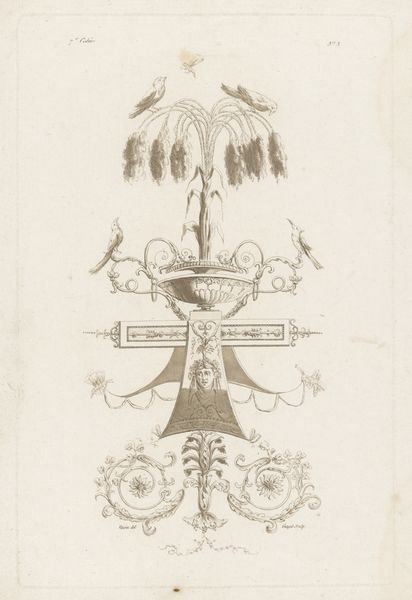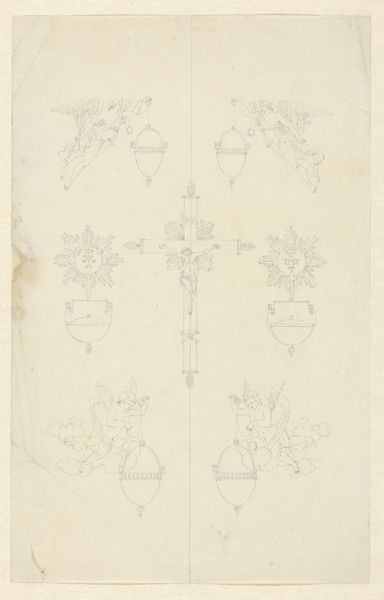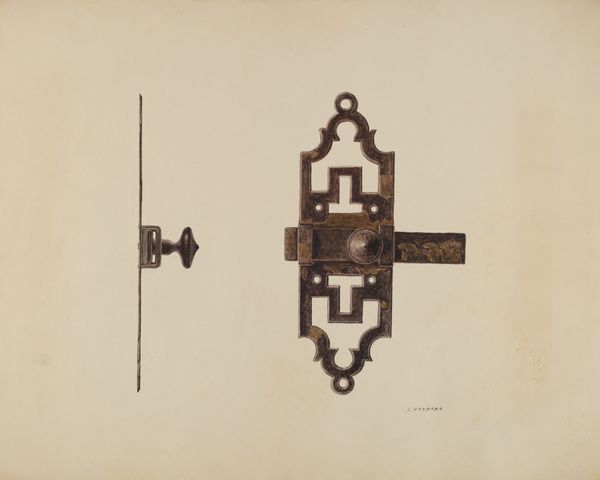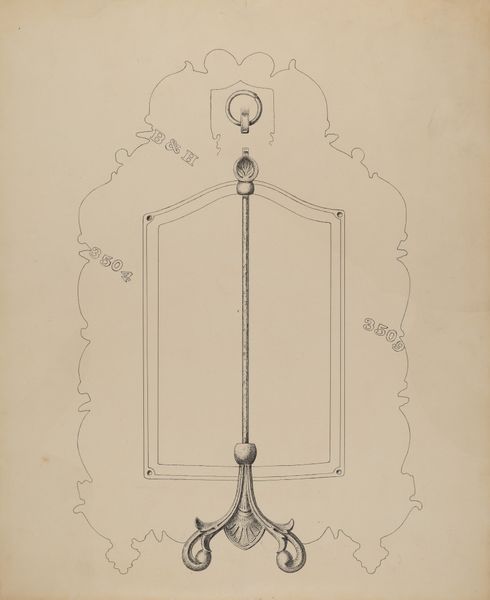
drawing, mixed-media, watercolor
#
drawing
#
mixed-media
#
water colours
#
watercolor
#
watercolour illustration
#
decorative-art
#
watercolor
#
realism
Dimensions: overall: 35.7 x 25.5 cm (14 1/16 x 10 1/16 in.) Original IAD Object: 120" high; 48" wide
Copyright: National Gallery of Art: CC0 1.0
Editor: This is a mixed-media drawing entitled "Weather Vane," created around 1937 by Vincent P. Rosel. There is something quaint and deliberately old-fashioned in its lines. How do you interpret this work and its appeal? Curator: The weather vane itself, a symbol deeply rooted in agrarian societies, points beyond simple meteorology. Consider the year inscribed, 1879, predating the drawing itself. It whispers of historical consciousness, of echoing forms repeating themselves across generations. Don't you think? Editor: That is fascinating! So, it's almost like the artist is layering different time periods on top of each other. Why use older symbols of wayfinding for a modern-day audience? Curator: Precisely. The compass points -- North, East, South, West -- become less about literal direction and more about symbolic orientation. The artist may be invoking a cultural memory, when people were more directly connected to the land and the elements, navigating not just geography, but also cultural values and spiritual beliefs. What emotions are conjured when you consider that lost connection? Editor: I feel a tinge of nostalgia, a yearning for that simpler way of life. I did not expect something as basic as a weather vane to contain so much complexity. Curator: Indeed. Visual culture embeds itself within us, shaping how we perceive time and tradition. This work isn't merely representational; it's a potent symbol laden with echoes from the past and maybe a critique of the present. It asks us to contemplate our place within a continuous narrative. Editor: I will never look at a weather vane the same way again! Curator: Nor I! The more one learns about symbols and the messages they hide, the more rewarding art becomes.
Comments
No comments
Be the first to comment and join the conversation on the ultimate creative platform.
